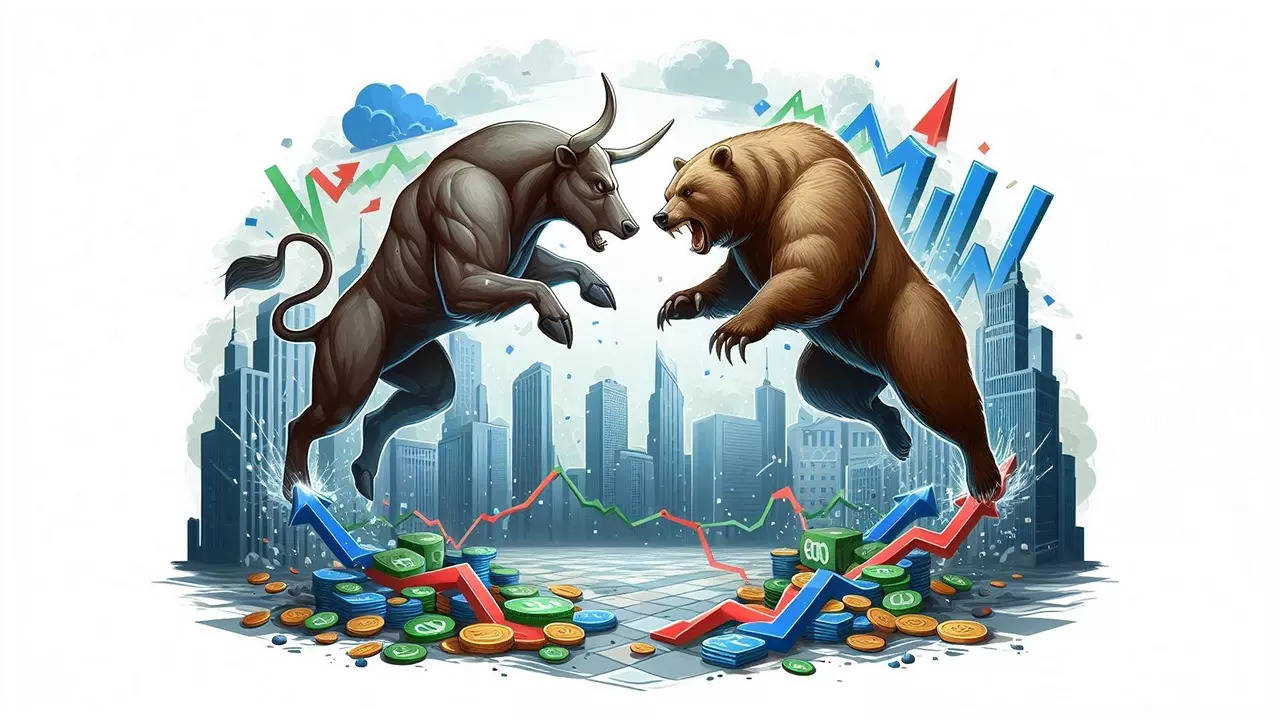The Indian equity markets experienced resistance at higher levels on Wednesday, leading to a paring of initial gains.Analysts attributed the pressure on the markets to persistent selling by Foreign Institutional Investors (FIIs) and elevated India VIX levels. Siddhartha Khemka, Head – Retail Research at Motilal Oswal Financial, expects the market to consolidate within a broader range as the election polling progresses and the result season approaches its end.
Nagaraj Shetti, Senior Technical Research Analyst at HDFC Securities, suggests that a sustainable move above the immediate resistance of 22300 levels could open the doors for a higher target of 22600 levels in the near term, with immediate support at 22070 levels.
Wall Street’s three major indexes achieved record closes on Wednesday, with the S&P 500 and Nasdaq advancing more than 1% after a smaller-than-expected rise in consumer inflation bolstered hopes for interest rate cuts by the Federal Reserve.
Asian equities followed suit, tracking gains on Wall Street as the latest US inflation data reinforced bets for Federal Reserve interest-rate cuts. The dollar slipped to multi-month lows after U.S. core inflation hit its slowest in three years and retail sales turned flat, strengthening the argument for rate cuts in the world’s largest economy. Oil prices extended gains from the previous session on signs of stronger demand in the U.S.
Several stocks are in the F&O ban period today, including Vodafone Idea, Birla Soft, ZEE, Balrampur Chini Mills, GMR Infra, SAIL, Hindustan Copper, PEL, PNB, Granules, India Cements, and LIC Housing Finance.
FIIs were net sellers at Rs 2,832 crore on Wednesday, while DIIs bought shares worth Rs 3,788 crore. The rupee rose 5 paise to settle at 83.46 against the US dollar on Wednesday, supported by weakness in the greenback against major crosses overseas. The net short position of FIIs increased from Rs 2.13 lakh crore on Tuesday to Rs 2.45 lakh crore on Wednesday.
Companies such as M&M, HAL, GAIL, Info Edge, Vodafone Idea, and Biocon, among others, are set to announce their fourth quarter earnings on Thursday.
function loadGtagEvents(isGoogleCampaignActive) { if (!isGoogleCampaignActive) { return; } var id = document.getElementById('toi-plus-google-campaign'); if (id) { return; } (function(f, b, e, v, n, t, s) { t = b.createElement(e); t.async = !0; t.defer = !0; t.src = v; t.id = 'toi-plus-google-campaign'; s = b.getElementsByTagName(e)[0]; s.parentNode.insertBefore(t, s); })(f, b, e, 'https://www.googletagmanager.com/gtag/js?id=AW-877820074', n, t, s); };
function loadSurvicateJs(allowedSurvicateSections = []){ const section = window.location.pathname.split('/')[1] const isHomePageAllowed = window.location.pathname === '/' && allowedSurvicateSections.includes('homepage')
if(allowedSurvicateSections.includes(section) || isHomePageAllowed){ (function(w) { var s = document.createElement('script'); s.src="https://survey.survicate.com/workspaces/0be6ae9845d14a7c8ff08a7a00bd9b21/web_surveys.js"; s.async = true; var e = document.getElementsByTagName('script')[0]; e.parentNode.insertBefore(s, e); })(window); }
}
window.TimesApps = window.TimesApps || {};
var TimesApps = window.TimesApps;
TimesApps.toiPlusEvents = function(config) {
var isConfigAvailable = "toiplus_site_settings" in f && "isFBCampaignActive" in f.toiplus_site_settings && "isGoogleCampaignActive" in f.toiplus_site_settings;
var isPrimeUser = window.isPrime;
if (isConfigAvailable && !isPrimeUser) {
loadGtagEvents(f.toiplus_site_settings.isGoogleCampaignActive);
loadFBEvents(f.toiplus_site_settings.isFBCampaignActive);
loadSurvicateJs(f.toiplus_site_settings.allowedSurvicateSections);
} else {
var JarvisUrl="https://vsp1jarvispvt.indiatimes.com/v1/feeds/toi_plus/site_settings/643526e21443833f0c454615?db_env=published";
window.getFromClient(JarvisUrl, function(config){
if (config) {
loadGtagEvents(config?.isGoogleCampaignActive);
loadFBEvents(config?.isFBCampaignActive);
loadSurvicateJs(config?.allowedSurvicateSections);
}
})
}
};
})(
window,
document,
'script',
);
Source link
For more information call us at 9891563359.
We are a group of best insurance advisors in Delhi. We are experts in LIC and have received number of awards.
If you are near Delhi or Rohini or Pitampura Contact Us Here


